Credit: National Geographic
Cyrus the Great (c. 600–530 BCE) was the visionary founder of the Achaemenid Empire, the world’s first true superpower, centered near the Persian Gulf. Renowned for his military genius, tolerant governance, and innovative administration, Cyrus established an empire that stretched from the Mediterranean to the Indus Valley. His legacy includes the Cyrus Cylinder, often hailed as the first charter of human rights, and a model of leadership that influenced future empires.
In this article, we explore:
-
The rise of Cyrus the Great and the birth of the Persian Empire
-
His military conquests and diplomatic strategies
-
The revolutionary governance of the Achaemenid Empire
-
The enduring legacy of Cyrus in history and modern culture
Source: https://en.wikipedia.org/wiki/Achaemenid_Empire
The Rise of Cyrus the Great
Early Life and Background
Cyrus II, later known as Cyrus the Great, was born around 600 BCE in Persis (modern-day Fars, Iran). According to ancient sources like Herodotus and the Nabonidus Chronicle, he was of royal descent, belonging to the Achaemenid dynasty. His early years remain shrouded in legend, with tales suggesting he was raised by shepherds before reclaiming his rightful throne.
Overthrowing the Medes
The Medes, a powerful Iranian kingdom, ruled over Persia before Cyrus’s rise. In 550 BCE, Cyrus led a revolt against King Astyages of Media, defeating him and uniting the Persians and Medes under one rule. This marked the birth of the Achaemenid Empire—the first Persian Empire.
[ABOVE: Replica of the Ishtar Gate, the 8th gate to the inner city of Babylon, now in the Pergamon Museum, Berlin] , Source: https://steemit.com/history/@oo7harv/cyrus-the-great-2-conquest-of-babylon-and-his-downfall
Military Conquests and Empire Building
Conquest of Lydia (546 BCE)
Cyrus expanded his empire westward, defeating King Croesus of Lydia (modern-day Turkey). Known for his wealth, Croesus was outmaneuvered by Cyrus’s tactics, leading to the fall of Sardis, Lydia’s capital.
Fall of Babylon (539 BCE)
One of Cyrus’s most significant victories was the bloodless capture of Babylon in 539 BCE. The Babylonian king, Nabonidus, was unpopular, and Cyrus positioned himself as a liberator. According to the Cyrus Cylinder, he was welcomed by the Babylonians, who saw him as a just ruler.
Expansion into Central Asia and Egypt
Before his death, Cyrus extended Persian dominance into Central Asia, conquering regions like Bactria and Sogdia. Though he did not live to invade Egypt, his successors, like Cambyses II, completed his vision.
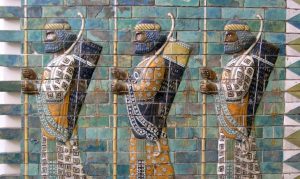
Achaemenid Persian Empire Army, credit: https://www.realmofhistory.com/2019/11/05/10-facts-achaemenid-persian-empire-army/
Revolutionary Governance and Tolerance
The Cyrus Cylinder: An Ancient Human Rights Charter?
Discovered in 1879, the Cyrus Cylinder is a clay document declaring Cyrus’s policies of religious freedom and abolition of slavery. It allowed deported peoples (like the Jews) to return home, earning Cyrus praise in the Hebrew Bible (Isaiah 45:1) as a “messiah.”
Decentralized Administration
Instead of imposing Persian customs, Cyrus allowed conquered nations to retain their laws, religions, and traditions. He appointed satraps (governors) to oversee provinces, ensuring stability without oppression.
Infrastructure and Trade
Cyrus improved road networks (like the Royal Road), standardized coinage, and promoted trade across the empire, laying the foundation for Persia’s economic prosperity.
Tomb of Cyrus in Iran, Credit: https://www.amusingplanet.com/2019/08/tomb-of-cyrus-worlds-oldest-earthquake.html
Death and Legacy
Final Campaign and Death (530 BCE)
Cyrus died in 530 BCE while battling the Massagetae, a Central Asian tribe. Accounts vary—some say he fell in battle, while others claim he was captured and executed.
Successors and the Height of the Achaemenid Empire
His son, Cambyses II, expanded into Egypt, while Darius the Great later organized the empire into a well-structured administration.
Modern Recognition
-
UN’s Cyrus Cylinder Exhibit – Hailed as an early symbol of human rights.
-
Iranian National Icon – Cyrus remains a symbol of Persian pride.
-
Influence on Leaders – Alexander the Great and modern politicians have admired his governance.
Credit: https://www.gcgi.info/367-cyrus-cylinder-a-beacon-of-hope-for-a-peaceful-middle-east
Conclusion
Cyrus the Great’s empire near the Persian Gulf set the standard for future superpowers. His military brilliance, tolerant rule, and visionary leadership made the Achaemenid Empire a model of ancient governance. Today, his legacy endures in history, politics, and human rights discourse, proving that true leadership transcends time.
FAQs About Cyrus the Great
-
Was Cyrus the Great the first emperor?
-
Yes, he founded the first Persian Empire, the largest of its time.
-
-
What is the Cyrus Cylinder?
-
A clay decree promoting religious freedom and the return of exiled peoples.
-
-
How did Cyrus the Great die?
-
He was killed in battle against the Massagetae in 530 BCE.
-
-
Why is Cyrus called “the Great”?
-
Due to his military conquests, tolerant policies, and empire-building achievements.
-
By studying Cyrus the Great, we gain insights into the origins of empire-building, diplomacy, and inclusive governance—lessons still relevant today.

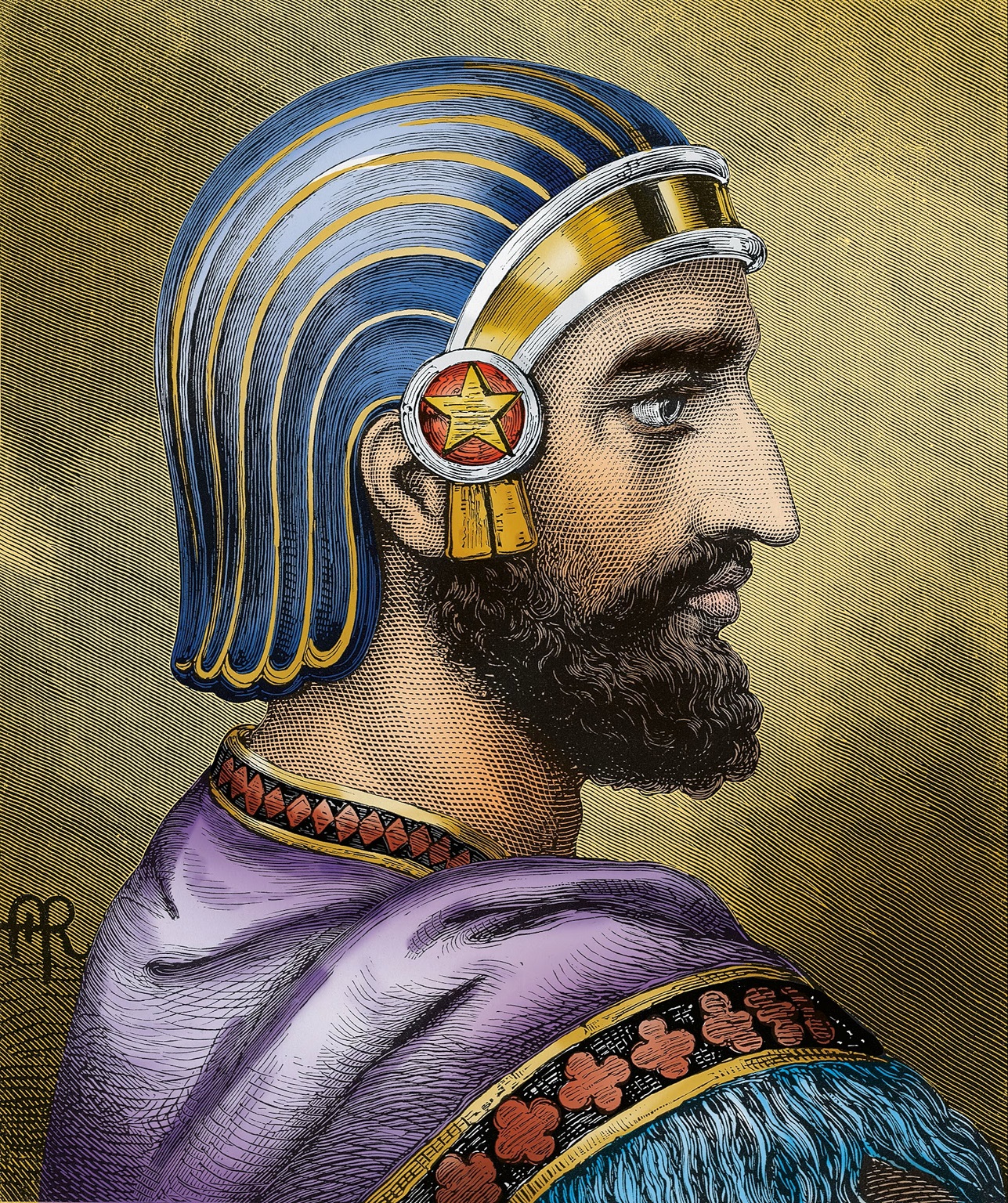
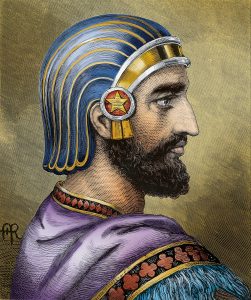
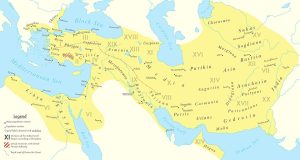
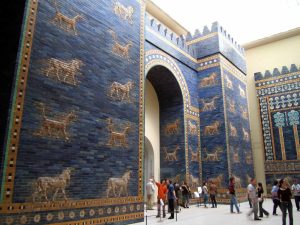
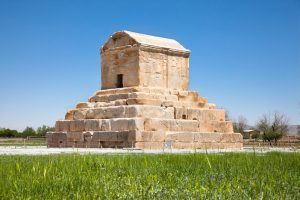
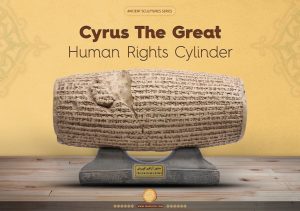
Thanks for such an interesting article, wonderful !!